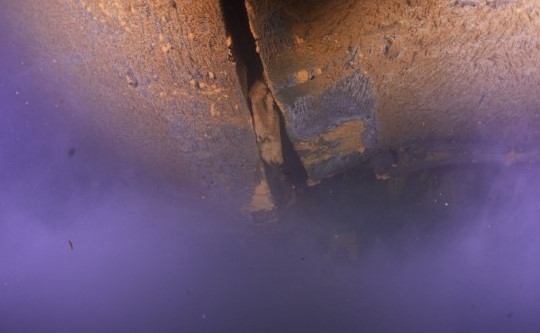A new investigation into the sinking of ferry Estonia that claimed 852 lives in 1994 revealed flaws in its bow visor construction missed during its certification.
According to investigators from Estonia, Finland, and Sweden, if the necessary examination was carried out, the Estonia-registered ship would not be approved as seaworthy to serve the Tallin-Stockholm route it operated.
In 1997, an official investigation into Europe’s worst peacetime maritime disaster since World War Two concluded that the roll-on, roll-off ferry sank on a stormy Baltic Sea after a bow shield failed, damaging a bow ramp and causing the car deck to flood.
However, a Discovery Network documentary that was in 2020 showed underwater images of holes in Estonia’s hull, prompting Sweden, Estonia, and Finland to start a new survey of the wreck lying in shallow Finnish territorial waters.
If the inspection, following regulations, had been carried out, the flaws of the visor construction could have been discovered and the accident would probably not have occurred
the presentation of the new probe’s findings said.
More specifically, the holes discovered in the hull were possibly caused by the impact on the vessel on the sea bottom, stated Rene Arikas, Estonian Safety Investigation Bureau director, rather than have caused the sinking.
We do know that when she sank, she didn’t have bow visor, she didn’t have the ramp. But so far we have not found any damages (to the hull before sinking) other than that in the bow area
mentioned Risto Haimila, the chief marine safety investigator at the Finnish Safety Investigation Authority.
Before the final results of the probe are announced, the investigators will raise Estonia’s bow ramp to further examine the damage, take samples from the hull area, survey the inside of the ship, and conduct interviews with the survivors.
As Reuters reports, speculation about the causes of the sinking has included a collision with a submarine and an explosion inside the ship, but the new probe so far has not found any evidence of an explosion in the bow area or a collision with another vessel or a floating object.
The following were the most significant findings concerning the wreck:
- The wreck of MV ESTONIA is in a poor condition with severe structural damage.
- No penetrating damage is observed in the hull below the water line, except for damage already known before the Preliminary Assessment.
- The port bridge wing, on deck 9, is pressed down towards deck 6 by several meters, implying that the part of the vessel which contains the bridge may be partially loose from the rest of the construction.
- The upper and aft part of the vessel is severely deformed.
- From astern, the upper part of the vessel is twisted to port from deck 6. This twist runs along the majority of the length of the vessel.
- An indentation was observed on the bottom of the vessel which follows the shape of at least some of the bunker tanks.




























































